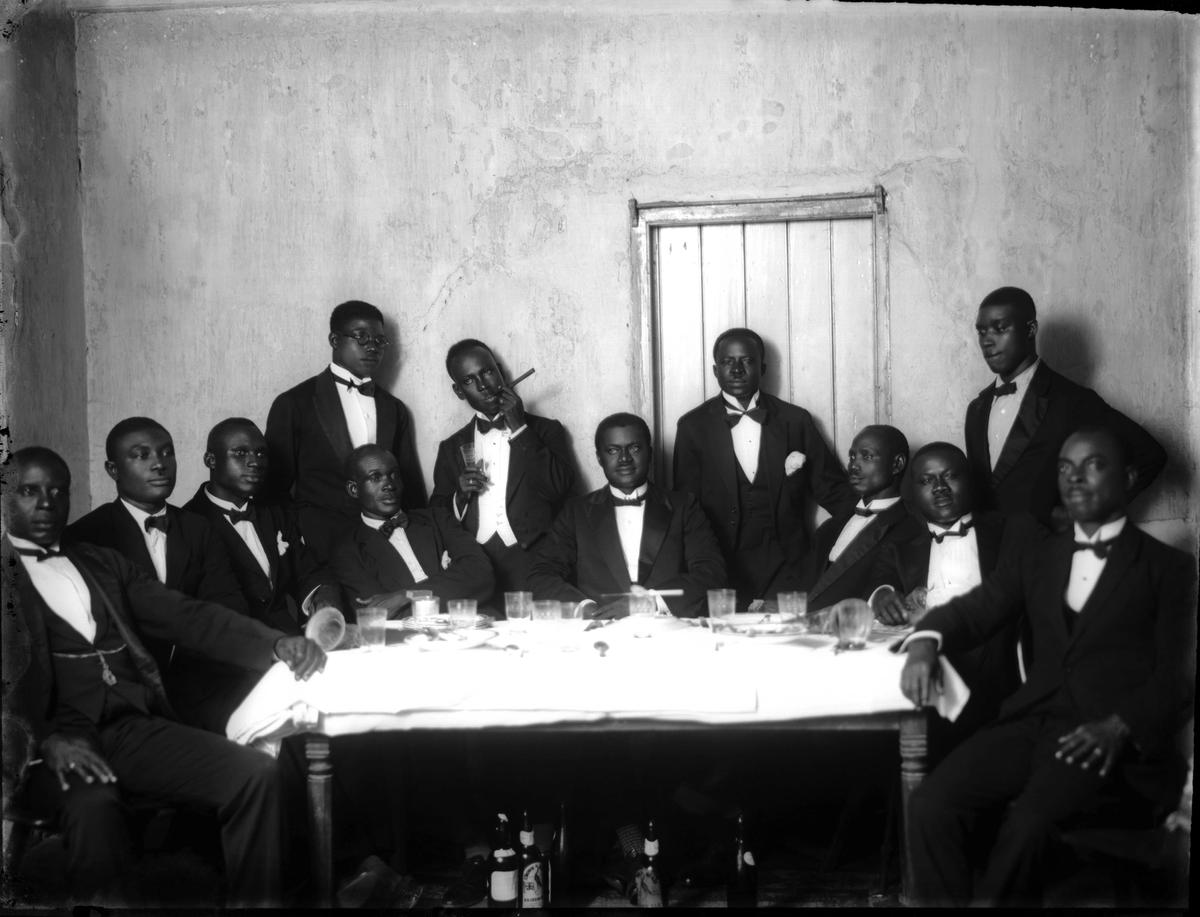Few people photographed as many major events and notable figures in Ghana’s pre and post-colonial history as the late J.K. Bruce-Vanderpuije.
On 28 February 1948, he captured on camera the fatal shooting of three local ex-servicemen who were on a march to the seat of the British colonial government, protesting unpaid war allowances. Riots and further protests broke out in response to the shooting, and Bruce-Vanderpuije's images were tendered as evidence in a commission of inquiry that was set up to investigate. The 1948 Accra riots, as they are now known, are said to have been a pivotal moment leading to the independence of Ghana and other African countries.
In the 1920s, as the official photographer of Achimota School (formerly known as Prince of Wales College and co-founded by the then Gold Coast governor Sir Frederick Gordon Guggisberg) he had captured images of a very young Kwame Nkrumah, who would later become the first president of the newly independent Ghana. On 6 March 1957, the day independence became a reality, Bruce-Vanderpuije was at the old polo grounds (now Kwame Nkrumah Mausoleum), capturing the moment Nkrumah famously proclaimed, “...at long last, the battle has ended... Ghana, your beloved country, is free forever.”
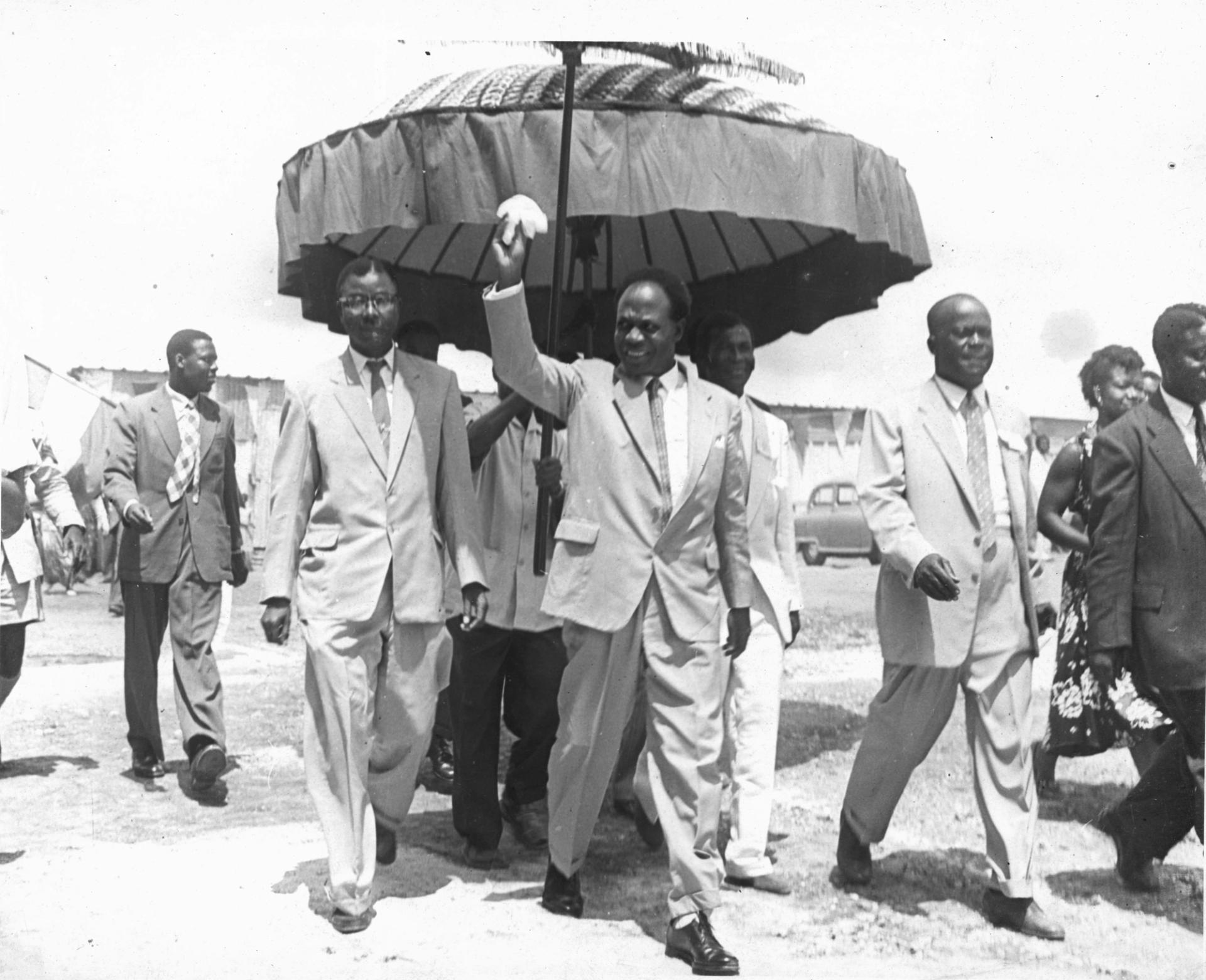
J. K. Bruce-Vanderpuije, Kwame Nkrumah Waving (1961)
Courtesy of Deo Gratias Studio and Efie Gallery, Dubai
“He was probably the only person to take certain photographs in [Ghana’s] history at a certain time,” says Kate Aku Tamakloe, his granddaughter and manager of the century-old photo studio he founded. There might have been other photographers during Nkrumah’s landmark 1957 pronouncement, she adds, “but he was right in front.”
“That picture,” she added, referring to the print of Nkrumah on a podium flanked by members of the Gold Coast cabinet at the entrance of the Deo Gratias studio. “We [at the studio] have several of them. It's [an image that is] out there but [his version] is unique to him.”
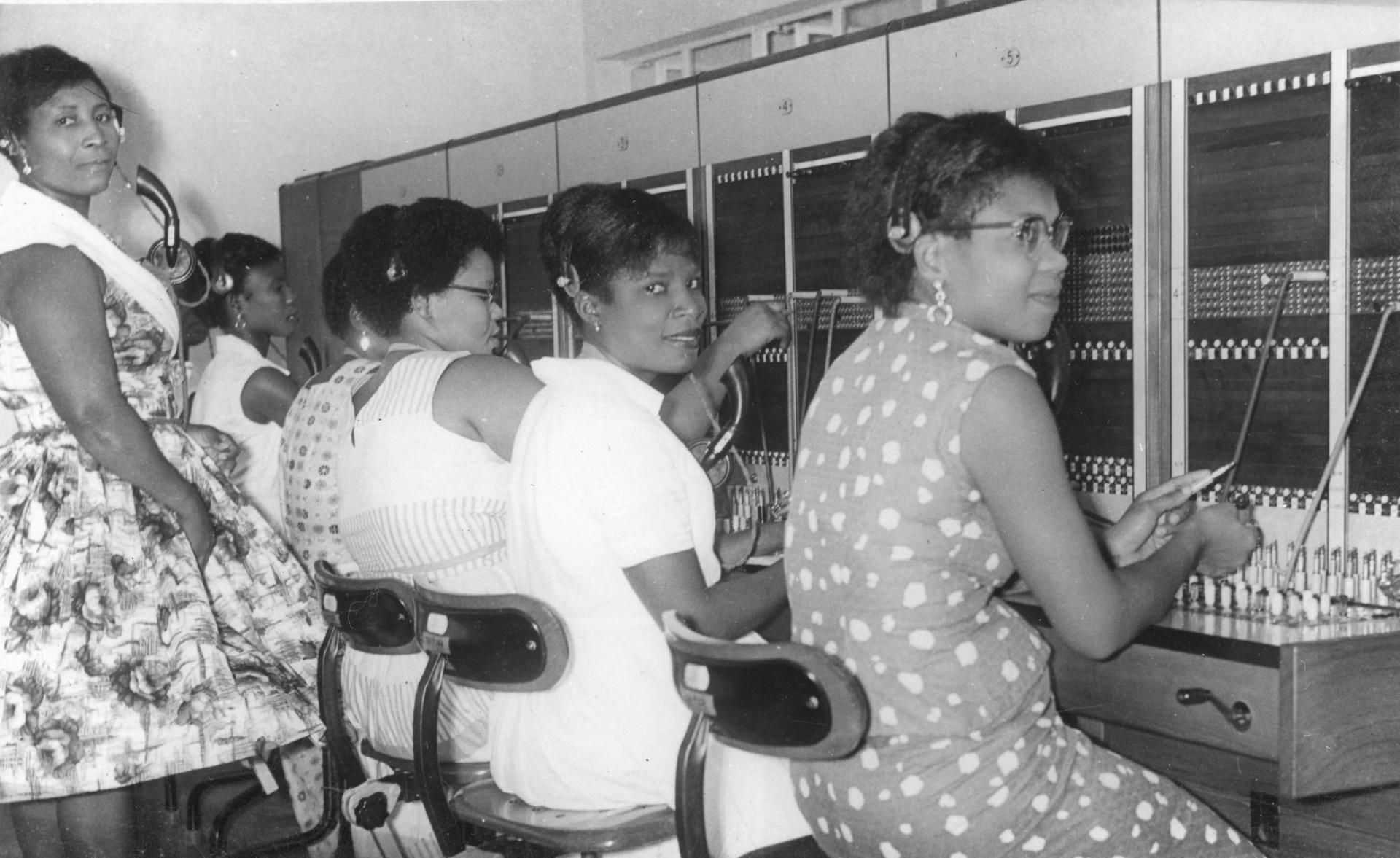
J. K. Bruce-Vanderpuije, Telephonist at their Exchange (1940s)
Courtesy of Deo Gratias Studio and Efie Gallery, Dubai
Referred to as the forgotten forefather of 20th-century African photography, James Kobla Bruce-Vanderpuije was born in Jamestown (a suburb of Ghana's capital city, Accra) on 7 March 1899 to Emmanuel Vanderpuije, who worked in the shipping industry, and Eleanor Afua Bruce of the Otublohum royal family.
He took up photography as a hobby while at school. Later, he spent three years learning from photographer J.A.C Holm, and also worked briefly with the Accra Metropolitan Authority (then known as Accra Town Council.) In 1922, aged 23, he established the Deo Gratias Photo Studio in Jamestown, now said to be the oldest operational photography studio in West Africa.

J. K. Bruce-Vanderpuije, Miss Ghana (1958)
Courtesy of Deo Gratias Studio and Efie Gallery Dubai
Under his helm, the studio was a hub of activity with diplomats, elites, and traditional and community leaders all trooping in to have their portraits taken. The studio has an archive of more than 50,000 images— taken over a span of seven decades—of figures ranging from Nkrumah to the late Ghanaian politician J.B. Danquah and the late British Queen Elizabeth II.
Around a decade ago, Tamakloe (who now runs Deo Gratias studio) set out on a journey to “categorise”, she says, the images in the portfolio as a way to make it easier to process requests she was receiving for photographs. She grouped images based on themes including “families,” “weddings,” “funerals,” and “people wearing [specific] Kente design”. This was done with the assistance of her now visually impaired 89-year-old father Isaac Hudson Bruce-Vanderpuije (J.K's son, and the person who first inherited the space). Isaac shared stories about some of the pictures and helped to identify their subjects.
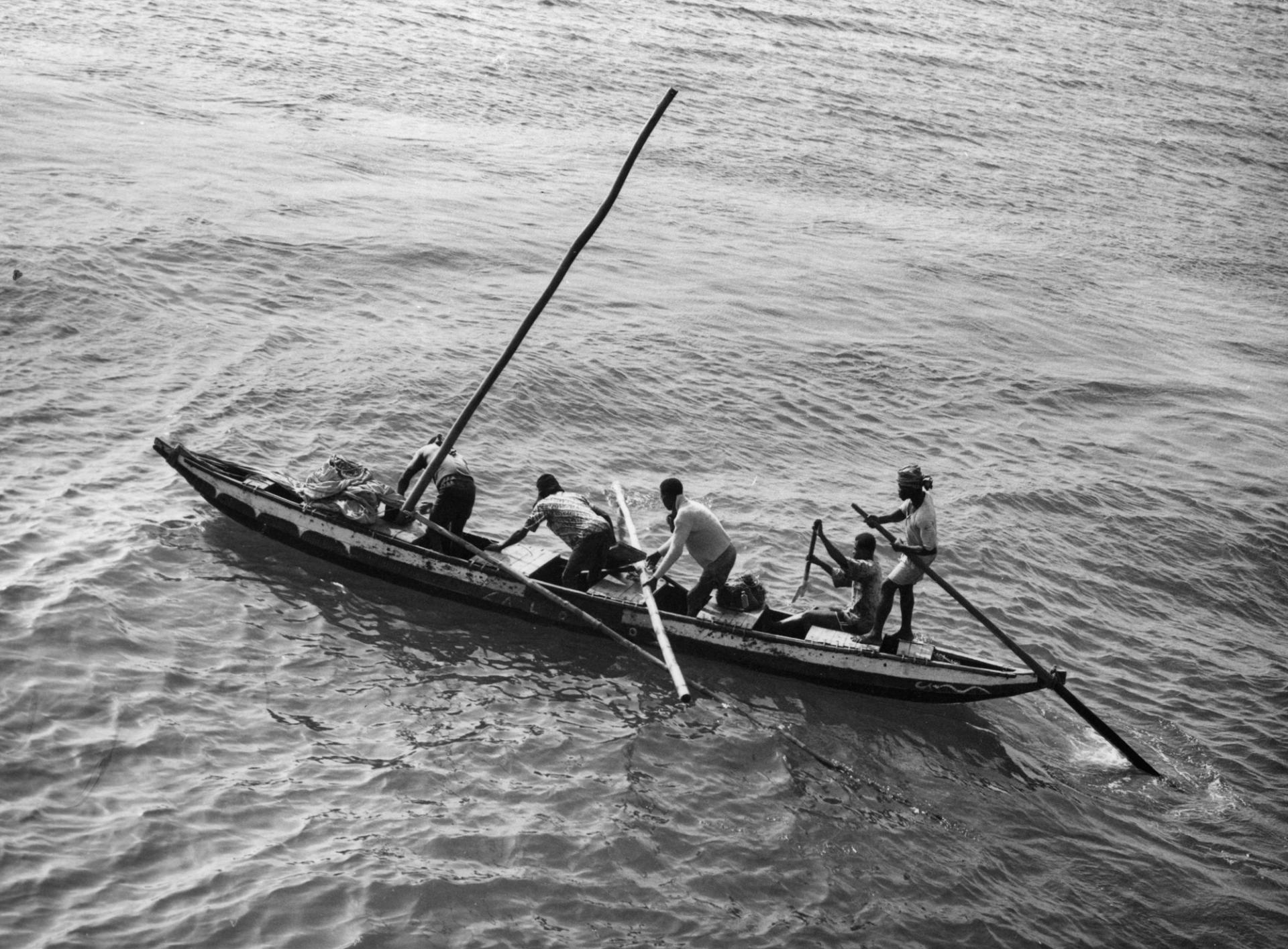
J. K. Bruce-Vanderpuije, Fishermen at Sea (1940s)
Courtesy of Deo Gratias Studio and Efie Gallery, Dubai
Tamakloe has also worked hard to preserve the images, a journey that itself has included some bumps in the road, including losing the hard drive after beginning the process of digitising the archive, an experience Tamakloe says was “very depressing after having done so much.” She says, however, that she is “enjoying that the end is not yet here because I’m still discovering” images—citing recent examples such as a 1950s photograph of Seth Anthony, the first African commissioned as an officer of the British Army, and his family. It was one of Anthony's daughters, who visited the studio in 2016, that identified him in the photograph.
Prints of images from the archive, including the shot of Seth Anthony, were featured in a group presentation by Efie Gallery at the 1-54 Contemporary African Art Fair in London this past October. On 12 January 2024, Unveiling the Shadows of the Past: J.K Bruce-Vanderpuije – The Hidden Icon of Photography, the first gallery show to be dedicated to Bruce-Vanderpuije's work, will be on view at the Efie Gallery in Dubai. Curated by Ethiopian photographer Aida Muluneh, it will showcase more than 40 previously unseen black-and-white images by Bruce-Vanderpuije, depicting life in Ghana in the 1920s and 30s and offering insight into the formation of an independent, 20th-century Ghanaian social and political identity as the country prepared to liberate itself from colonial rule.
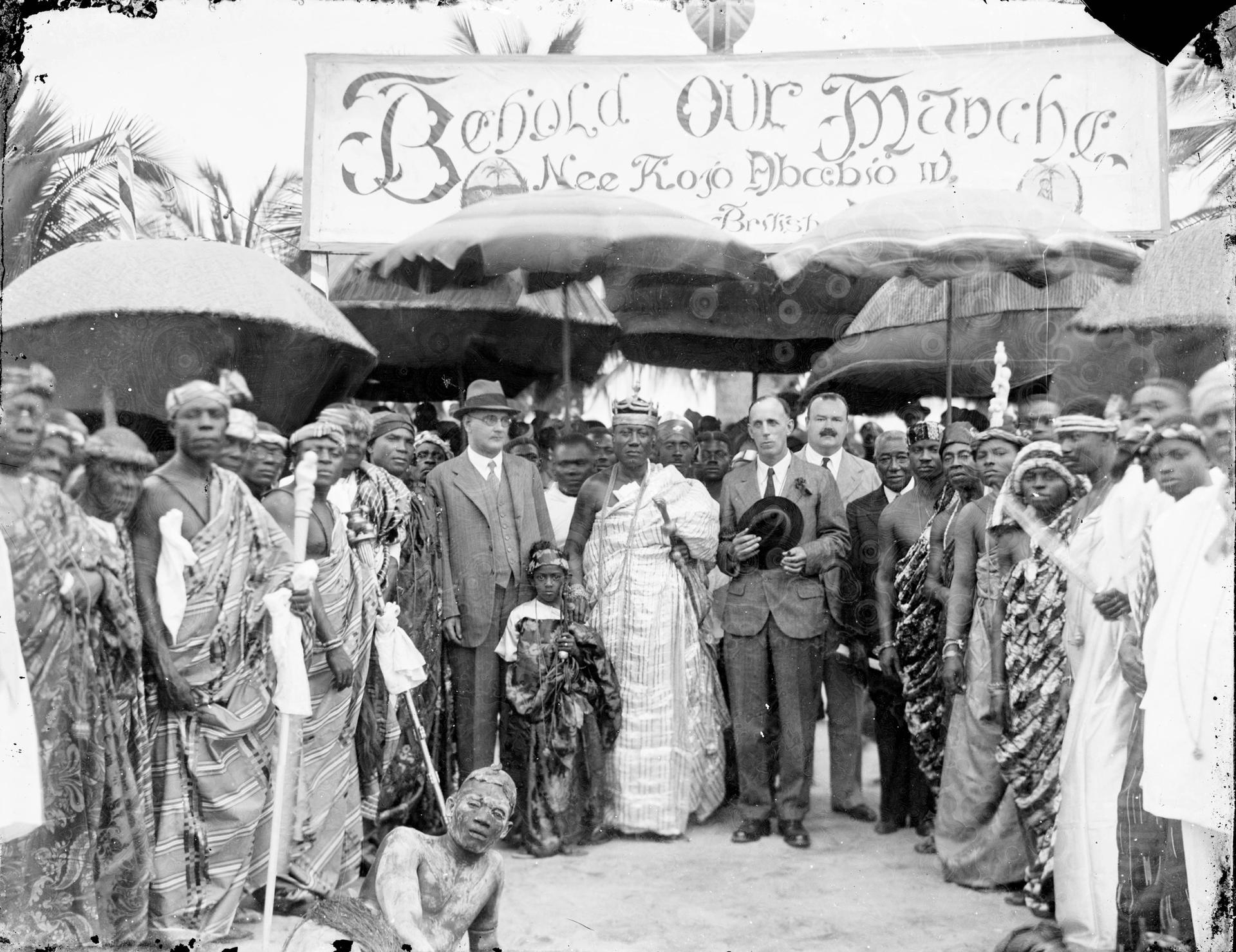
J. K. Bruce-Vanderpuije, Nee Kodjo Ababio IV (1936)
Courtesy of Deo Gratias Studio and Efie Gallery, Dubai
“I am really looking forward to having interactions with people who will see [the images] for the first time—not just the art or photo lovers but also historians,” says Tamakloe of the upcoming exhibition. “I have always said I want to tell the Ghanaian story."


